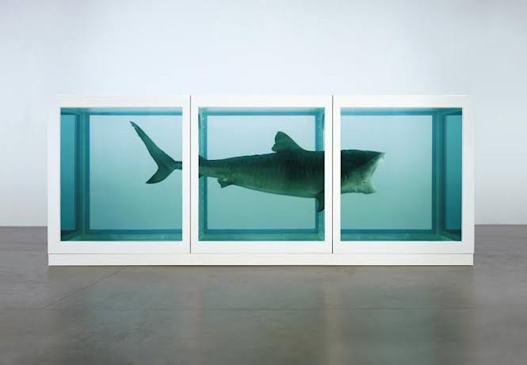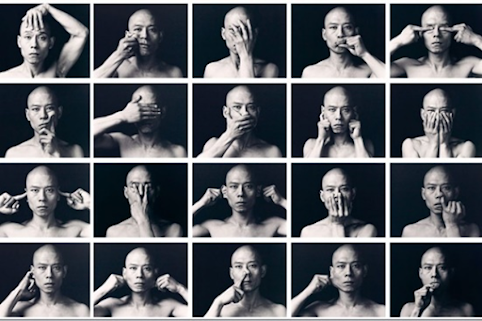Conceptual art in a better way could be considered as communication that starts with the question 'Is that art?
 |
| Comedian, 2019, Maurizio Cattelan |
The conversation that arises between the artist and the spectator through the assembled or performing concepts completely rejects the standard ideas of art. This also employs the concern about aesthetics, skills, appearance, marketability, and investment as many times the conceptual artworks are not even physical or could be owned.
A concept as we may know is an abstract notion, the significance of which is more than its execution or mien. It is a non-tangible object itself but rather a mental representation of objects, experiences, and relations. Overall, concepts are fundamental to human thought and language, enabling us to navigate and interpret the world around us, communicate our ideas, and engage in higher-level cognitive processes.
Concepts when infused with art give a completely different depth to creativity. Nowadays conceptual art helps most artists to express and to raise questions through installations and performances, though appreciated by many, conceptual art is many a time goes unsung or unappreciated by art investors and commercial art galleries due to its non-physicality. Conceptual artists often challenge the materiality and object-based nature of traditional art forms. The idea or concept becomes the primary driving force, and the artist's intention and intellectual engagement take precedence.
Conceptual art is counted amongst the most intellectual and deep forms of art mediums. No doubts, as there are several thoughts inculcated behind this form. Emerging in the 1960s as a response to the dominance of traditional art forms and seeking to challenge conventional notions of what art can be, Conceptual art prioritizes the concept, idea, or thought process behind the artwork over its visual or material aspects.
The Dada movement, which emerged during World War I, rejected traditional artistic conventions and emphasized the importance of ideas and concepts over aesthetic qualities. Dada artist, Marcel Duchamp (1887 - 1968) started the idea of conceptual art with readymade objects and the brutal simplicity of minimalism ignoring the hold on the formalities of aesthetically appealing art. Duchamp's ready-made, everyday objects presented as art, laid the groundwork for the concept-based approach of conceptual art. At the same time the Fluxus movement, an international network of artists, composers, and performers, embraced an interdisciplinary and experimental approach to art. Fluxus artists, including Yoko Ono and George Maciunas, incorporated conceptual strategies, performance art, and audience participation into their work. Their emphasis on ideas, actions, and the dematerialization of art materials influenced the development of conceptual art.
 |
| Fountain, 1917, Marcel Duchamp |
The emergence of Minimalism in the 1960s, with artists like Donald Judd and Dan Flavin, contributed to the conceptual turn in art. Minimalism's emphasis on simplicity, seriality, and the reduction of art objects to their essential forms laid the foundation for the exploration of ideas and the concept-driven nature of art.
Conceptual art was also influenced by critical engagement with art institutions and the art market. Artists such as Hans Haacke and Michael Asher began questioning the role and power dynamics of galleries, museums, and other art institutions. Their work exposed the underlying structures and ideologies that shape the production, display, and reception of art.
Playing a pivotal role in the evolution of the art world by challenging established norms, expanding artistic possibilities, and reshaping the way we think about and engage with art, Conceptual Art has added a new dimension to the creative sphere.
It expanded the definition of art beyond traditional forms and materials. By emphasizing ideas, concepts, and processes, it broadened the scope of artistic expression. This led to the inclusion of various mediums and approaches, such as installation art, performance art, video art, digital art, and conceptual photography, among others. The boundaries of what can be considered art have been pushed, allowing for greater experimentation and innovation. It has also shifted the focus of art from aesthetic qualities to intellectual engagement and placed importance on the underlying ideas, concepts, and philosophies driving the artwork. This intellectual depth encouraged viewers to think critically and engage with the concepts presented by the artist with a deeper understanding of art as a means of communication and reflection on broader social, political, and cultural issues.
Moreover, Conceptual art played a significant role in questioning and critiquing established artistic institutions, including galleries, museums, and art markets. It challenged the authority and power dynamics within these institutions, raising awareness of their influence on artistic production and consumption. By questioning these structures, it paved the way for new approaches to curating, exhibition practices, and art distribution, leading to greater diversity and inclusivity in the art world. Having introduced a greater emphasis on audience participation and collaboration, it encouraged viewers to actively engage with the artwork, either through physical interaction or through interpretation and dialogue. This shift towards participatory art experiences allowed for a more democratic and inclusive art world, blurring the boundaries between artist and viewer and fostering a sense of shared ownership and co-creation.
This art form has also transcended national and cultural boundaries, becoming a global movement, allowing the exchange of ideas and artistic practices between artists from different regions and backgrounds. This cross-cultural exchange contributed to the diversification of artistic perspectives, challenging dominant narratives, and fostering a more globalized and interconnected art world.
A few artists who are adding paramount value to the contemporary conceptual art world are, Damien Hirst (1965), Katrin Fridriks (1974), Claude Rutault (1941), Jenny Holzer (1950), Zhang Huan (1965), Adam McEwen (1965), Ai Weiwei (1957).
 |
| The Physical Impossibility of Death in the Mind of Someone Living, 1991, Damien Hirst |
These artists represent just a fraction of the diverse and dynamic field of contemporary conceptual art. Each brings their unique perspective, ideas, and approaches to challenge and expand the boundaries of art in the present day.
 |
| Skin, Zhang Huan |
In India, Conceptual art has emerged as a significant artistic movement, reflecting the global influence of conceptualism while also incorporating local cultural, social, and political contexts. Indian artists have embraced conceptual approaches to art-making, using ideas, processes, and intellectual engagement to explore a range of themes and issues.
In the 1960s, artists in India were responding to the socio-political climate and the rapid changes taking place in the country. They sought to challenge established artistic practices and question the role of art in society. This led to a shift toward more experimental and conceptually-driven approaches.
One significant milestone in the history of conceptual art in India was the formation of the "Group 1890" in 1962. This group, which included artists like Nasreen Mohamedi, Jeram Patel, and Ambadas, emphasized abstract and non-representational art forms, exploring the idea of pure form and visual elements.
Another influential figure was Nalini Malani, who emerged in the 1970s and became known for her multimedia installations and performances. She was among the artists who embraced conceptual art practices and engaged with political and social themes through her work.
Indian conceptual artists often explore themes related to identity, cultural heritage, and the complexities of Indian society. They address issues such as caste, gender, religion, globalization, postcolonialism, and the intersection of tradition and modernity. By delving into these subjects, they challenge existing norms and contribute to ongoing dialogues about Indian society and its diverse cultural fabric.
Language and text have played a significant role in conceptual art practices in India. Artists incorporate written or spoken words, poetry, and textual elements as primary mediums to convey their ideas and concepts. This linguistic turn allows for the exploration of the linguistic diversity contexts of India. They often draw inspiration from Indian mythology, religious symbolism, folk traditions, and local practices. This contextual grounding adds depth and richness to their conceptual explorations, creating works that resonate with Indian audiences and broader global perspectives.
 |
| Public Notice 3, 2010, Jitish Kallat, Art Institute of Chicago, Chemould Prescott Road |
The 1980s and 1990s witnessed further developments in conceptual art in India. Artists like Subodh Gupta, N.S. Harsha and Atul Dodiya emerged during this period, employing conceptual strategies and incorporating socio-political commentary into their art.
Performance art and body art have gained prominence within the conceptual art scene in India. Artists use their bodies as mediums to convey ideas, experiences, and social commentaries. They employ various performative strategies to challenge societal norms, question power structures, and evoke emotional responses. Performance art in India often draws from cultural rituals, traditional performing arts, and the socio-political realities of the country.
 |
| Beyond the body and gender, Performance art, Debashish Paul |
It can be seen in the artworks and performances of artists Nikhil Chopra and Debashish Paul whose art focus on gender, body, politics, and history. Following the multi-expressionist methodology, these artists have illustrated the importance of interaction and involvement in presenting any concept or thought to the audience. Several galleries, museums, biennales, and art institutions dedicated to contemporary art in India have provided platforms for conceptual artists to exhibit their works and performances. These spaces promote critical discourse, support experimentation, and provide opportunities for engagement with the wider art community.
It's important to note that the development of conceptual art in India was intertwined with global art movements, especially the broader conceptual art movement that originated in the West in the 1960s. Indian artists were exposed to international art trends through exhibitions, publications, and travel, which influenced their artistic practices and conceptual approaches. This trend was positively taken and appreciated by Indian artists, which can be seen in the contemporary art affair.
If we take a few Indian contemporary conceptual artists into consideration, they have contributed a lot to evolving the Indian art world on the global dais. Artists like
1. Subodh Gupta is Known for his sculptural installations and conceptual artworks and has explored themes of identity, migration, consumerism, and everyday life. He often uses everyday objects, such as utensils and kitchenware, as symbols to comment on social and cultural issues. His works have been exhibited internationally, and he is considered one of India's leading contemporary artists.
2. Jitish Kallat's conceptual practice encompasses various mediums, including painting, sculpture, photography, and video. His works explore themes of time, memory, urbanization, and the socio-political landscape of India. Kallat often incorporates text, language, and historical references in his artworks to provoke critical thinking and reflection.
3. Shilpa Gupta's conceptual art practice addresses themes of identity, nationalism, censorship, and surveillance. She uses diverse mediums, including interactive installations, video, photography, and performance, to engage viewers in conversations about personal and political boundaries. Gupta's works often invite audience participation, blurring the lines between the artist, artwork, and viewer.
4. Amar Kanwar is known for his multi-channel video installations that explore socio-political issues, human rights, and violence. His conceptual artworks raise questions about power structures, social justice, and collective memory. Kanwar's works often combine poetic narratives, archival footage, and documentary techniques to create immersive experiences that challenge viewers' perspectives
5. Anita Dube is a prominent conceptual artist and curator known for her installations, sculptures, and mixed-media works. Her practice investigates issues of feminism, social inequality, and the body. Dube's works often employ symbolism, metaphors, and cultural references to address gender, power dynamics, and the politics of representation.
These eminent artists represent a diverse range of conceptual practices in India, each contributing to the contemporary art scene with their unique perspectives, critical engagement, and conceptual depth.
The direction and impact of conceptual art on society and the art world are multifaceted and continue to evolve. Conceptual art has already broadened the definition of art, incorporating various mediums and approaches. This trend is likely to continue, with artists exploring new technologies, interdisciplinary collaborations, and innovative techniques. The boundaries between different art forms and disciplines may continue to blur, allowing for hybrid forms and novel artistic expressions. As technology continues to advance, conceptual art is likely to incorporate new digital mediums and interactive experiences. Virtual reality, augmented reality, and other emerging technologies may be integrated into conceptual artworks, enhancing viewer engagement and creating immersive environments.
Conceptual art has a history of questioning and critiquing art institutions and structures. This tradition may continue, with artists challenging the existing power dynamics, gatekeeping, and market-oriented aspects of the art world. They may explore alternative exhibition models, and decentralized approaches, and seek to redefine the relationships between artists, institutions, and audiences.
Conceptual art often employs non-traditional mediums and formats such as installations, performances, videos, or ephemeral works. These mediums can be challenging to sell and present logistical hurdles for collectors and galleries. They may require specific installation requirements or ongoing maintenance, making them less practical for private collectors. The market for conceptual art may not be as established or as mainstream as that for more traditional art forms. This can result in lower demand and a smaller pool of potential buyers. Galleries and auction houses may face challenges in marketing and promoting conceptual art to a wider audience, which can impact sales and prices.
 |
The Weather Project, 2003, Olafur Eliasson, Turbine Hall, Tate Modern |
Furthermore, Pricing conceptual art can be subjective and challenging. Determining the value of an artwork that primarily revolves around the idea or concept rather than the physical object itself can be complex. It requires buyers and sellers to consider factors beyond materiality, such as the artist's reputation, historical significance, and critical reception.
Then how to sell it?
It is important to note that conceptual art has dedicated collectors, museums, and institutions that appreciate its intellectual depth and innovative approaches. The market for conceptual art has been growing over time as more collectors and institutions recognize its value and contribution to contemporary art.
While it often revolves around ideas, concepts, and narratives, when selling conceptual art, it is crucial to articulate and communicate the story behind the artwork. It may require some education and explanation for potential buyers to fully appreciate its value.
Conceptual art sometimes exists in limited editions or as unique, one-of-a-kind pieces. This limited availability can enhance the market for such artwork. Limited editions can provide an opportunity for collectors to acquire the conceptual work, making it more marketable.
Selling this intellectual form of art requires a combination of effective storytelling, education, targeted marketing, and engaging with the right networks. By highlighting the intellectual depth, narrative, and unique qualities of the artwork, potential buyers and collectors can be attracted who value and appreciate conceptual art.
It is phenomenal to see how artists are prioritizing their thoughts, experiences, and concepts over the aesthetical appeal of their artworks. This change in the art world has sensationally given rise to challenging and redefining the boundaries of art, encouraging critical thinking, intellectual engagement, and social dialogue. It remains a vibrant and influential movement, shaping the trajectory of contemporary art and providing a platform for artists to explore complex ideas and concepts.
Sanchita Sharma
2023
Content Copyright to Sanchita Sharma












